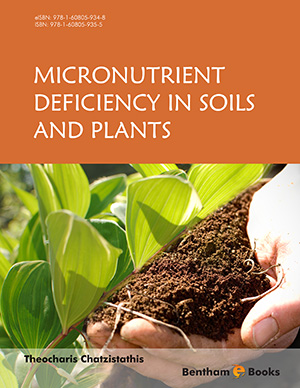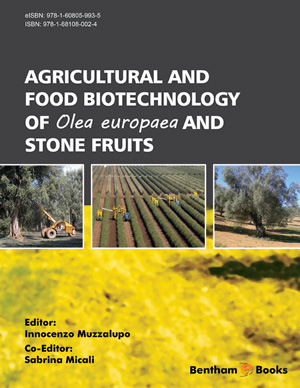Abstract
Despite the fact that globally Fe is in great abundance and total Fe content in soils is high, many times plants suffer from Fe chlorosis. This happens because the greatest part of this content exists in insoluble forms (oxides and hydroxides of Fe, phosphate substances of Fe etc.), thus it can not be taken up by plants. Iron solubility and uptake depends on many soil (pH, soil humidity, C.E.C., organic matter, CaCO3 content etc.) and non-soil factors (such as root exudates, plant-microbial interactions, production of phytosiderophores, root ferric reductase activity, fertilization, grafting on Fe-tolerant rootstocks, crop management practices etc.). There are two mechanisms adopted by plants in order to take up Fe from soil: strategy I, and strategy II. Strategy I is a complex Fe uptake mechanism developed by all plants, with the exception of Poaceae plants, which belong to strategy II. Strategy I uptake mechanism is based on the reduction of external Fe3+ to Fe2+ through the induction of Fe3+ chelate reductase enzyme. Strategy II uptake mechanism is based on an increase in the synthesis and secretion of phytosiderophores (PS) to the environment of the rhizosphere. Then, the PS-Fe complexes are easily taken up by plants.
Many horticultural and agronomic crops (such as apple, grape, peach and Citrus), which belong to strategy I species, are sensitive to Fe deficiency. From strategy II species, rice and sorghum are among the most sensitive crops. Since Fe is involved in chlorophyll synthesis, chlorophyll content and photosynthetic rate, they are usually decreased under Fe deficiency; this is the reason why chlorosis is the most usual macroscopic symptom observed under conditions of Fe starvation. There are many mechanisms of tolerance adopted by plants in order to face Fe deficiency, like enhanced ability to induce H+ extrusion in strategy I plants, production of greater quantities of PS that are released by roots in order to mobilize Fe in strategy II plants, modification of the morphology of their root system in order to increase Fe uptake etc. Finally, there are two basic methods of supplying Fe in plants: through soil and foliar application; the foliar application is very advantageous under alkaline soil conditions. There are two basic categories of Fe fertilizers: the inorganic ones, based on inorganic Fe compounds, such as Fe salts (e.g., Fe(SO4)7H2O) and insoluble compounds, such as Fe oxides-hydroxides and the organic fertilizers, based on organic compounds, like Fe-EDTA and Fe-EDDHA.
All the above mentioned topics concerning soil and plant factors influencing Fe solubility and uptake, strategies of Fe uptake, mechanisms of tolerance adopted by plants in order to face Fe starvation, as well as methods of fertilizer application, and substances used to alleviate chlorosis and organic fertilizers, are fully analyzed in this chapter under the light of the most recent and important scientific papers.
Keywords: Fe chelates, Fe chlorosis, Fe deficiency, Fe-DTPA, Fe-EDTA, Fe solubility, Fe-HEEDTA, FeSO4, Fe tolerance, strategy I, strategy II.














